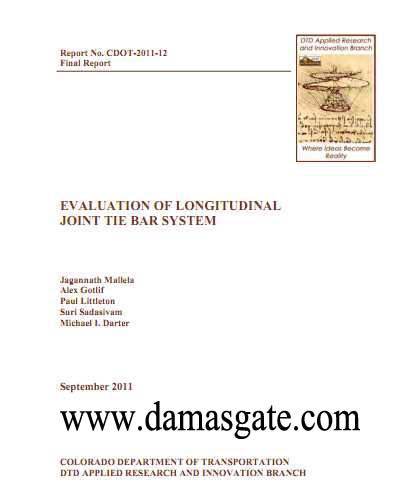Evaluation of Longitudinal Joint Tie Bar System

The contents of this report reflect the views of the authors, who are responsible for the facts and accuracy of the data presented herein. The contents do not necessarily reflect the official views of the Colorado Department of Transportation or the Federal Highway Administration. This report does not constitute a standard, specification, or regulation.
BACKGROUND
Longitudinal joints are needed in concrete pavements to (a) provide a contraction joint to relieve excessive thermal and moisture-induced stresses and deflections in the slab that may otherwise result in longitudinal cracking and (b) provide a construction joint to accommodate paving operations as needed to facilitate multiple lane and shoulder situations (Mallela et al. 2009). Equally important to the provision of longitudinal joints is the provision of an adequate longitudinal joint tie bar system. Tie bars, if designed and installed properly, prevent the lanelane and lane-concrete shoulder joints from opening excessively while at the same time preventing excessive restraint stresses in the concrete. A longitudinal joint that performs well improves load transfer efficiency (LTE) between concrete pavement slabs (more applicable for saw cut joints), resulting in increased load carrying capacity. In addition, it reduces moisture infiltration and enhances roadway safety.
Download
http://s18.alxa.net/s18/srvs2/01/Eva...Bar.System.rar